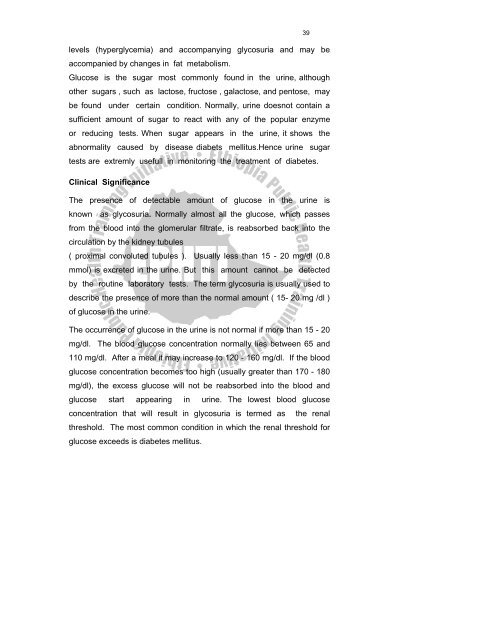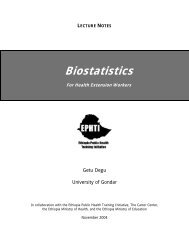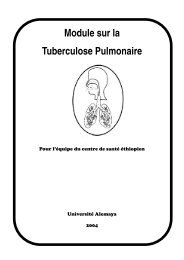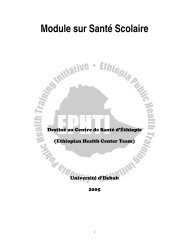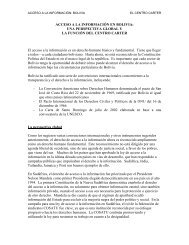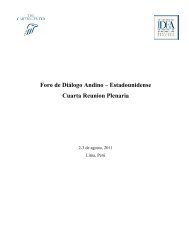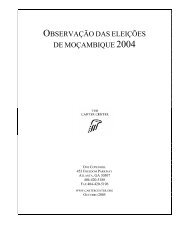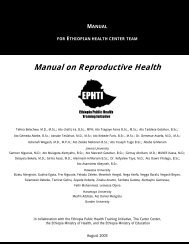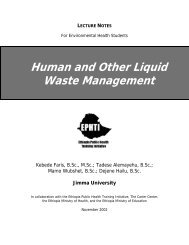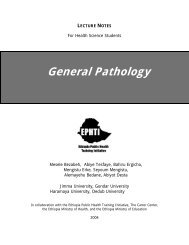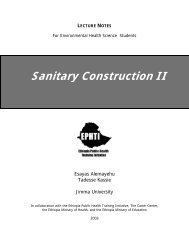Urinalysis - The Carter Center
Urinalysis - The Carter Center
Urinalysis - The Carter Center
Create successful ePaper yourself
Turn your PDF publications into a flip-book with our unique Google optimized e-Paper software.
levels (hyperglycemia) and accompanying glycosuria and may be<br />
accompanied by changes in fat metabolism.<br />
Glucose is the sugar most commonly found in the urine, although<br />
other sugars , such as lactose, fructose , galactose, and pentose, may<br />
be found under certain condition. Normally, urine doesnot contain a<br />
sufficient amount of sugar to react with any of the popular enzyme<br />
or reducing tests. When sugar appears in the urine, it shows the<br />
abnormality caused by disease diabets mellitus.Hence urine sugar<br />
tests are extremly usefull in monitoring the treatment of diabetes.<br />
Clinical Significance<br />
<strong>The</strong> presence of detectable amount of glucose in the urine is<br />
known as glycosuria. Normally almost all the glucose, which passes<br />
from the blood into the glomerular filtrate, is reabsorbed back into the<br />
circulation by the kidney tubules<br />
( proximal convoluted tubules ). Usually less than 15 - 20 mg/dl (0.8<br />
mmol) is excreted in the urine. But this amount cannot be detected<br />
by the routine laboratory tests. <strong>The</strong> term glycosuria is usually used to<br />
describe the presence of more than the normal amount ( 15- 20 mg /dl )<br />
of glucose in the urine.<br />
<strong>The</strong> occurrence of glucose in the urine is not normal if more than 15 - 20<br />
mg/dl. <strong>The</strong> blood glucose concentration normally lies between 65 and<br />
110 mg/dl. After a meal it may increase to 120 - 160 mg/dl. If the blood<br />
glucose concentration becomes too high (usually greater than 170 - 180<br />
mg/dl), the excess glucose will not be reabsorbed into the blood and<br />
glucose start appearing in urine. <strong>The</strong> lowest blood glucose<br />
concentration that will result in glycosuria is termed as the renal<br />
threshold. <strong>The</strong> most common condition in which the renal threshold for<br />
glucose exceeds is diabetes mellitus.<br />
39


